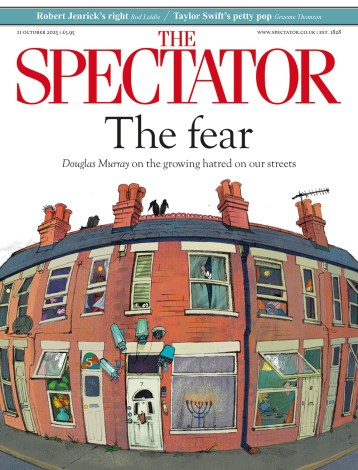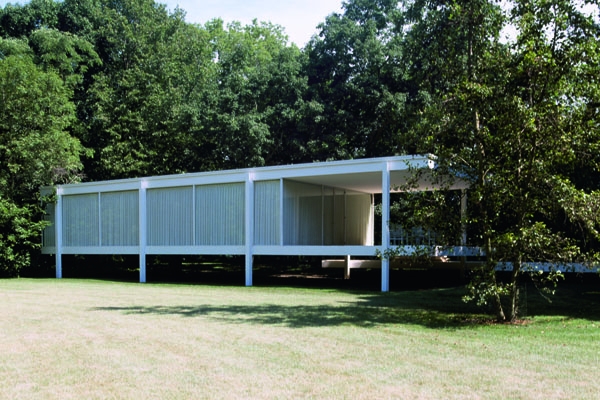Mies Van Der Rohe’s Farnsworth House is widely considered to be a masterpiece of modern architecture, yet the woman for whom it was built complained of the ‘alienation’ she felt in it, and described her architect as ‘simply colder and more cruel than anybody I have ever known’. Though much visited, it is unlived in, and its minimalist form seems better left untainted by any signs of life or individuality.
In contrast, a contemporary low-cost housing scheme in Chile by the architectural firm Elemental included future residents in the design process from the start. The resulting project provides basic accommodation, but leaves half the houses unbuilt: the gaps between each home can be filled in by the occupants — many used to building their own shelters in the favelas — in any way they wish. The result is unpredictable and lively: architecture in which the users are full participants in the creation of their environment.
These are among the many examples given by Rowan Moore in Why We Build that lead him to conclude that successful architecture is based on much more than ideas of beauty and form. Instead, while being forceful, architecture should retain an openness to evolution once built, and take into account the subtleties and unpredictablity of human existence. ‘Spaces that permit accident, are open to whatever is around them and understand their role as background or instruments, are more likely to create freedoms.’
This is a point of view shared by many, but one worth reiterating in the face of our media-dominated and corporate culture that favours buildings as photogenic and interesting objects that can also serve as branding tools. It is refreshing to hear the argument expressed in a balanced and informed way, which acknowledges the complexities and challenges of the building process, without any crude prejudice against ‘starchitecture’. (Moore describes his own doomed attempt, as director of the Architecture Foundation, to get a building by Zaha Hadid Architects — one of great visual impact — built in central London.)
It is the human stories behind buildings that interest Moore — both in terms of the desires and emotions that drive their construction and the lives that continue to shape them. He tells of the often tragic results of human vanity and ego along with some success stories: the sad absurdity of Dubai where shallow image is everything is contrasted with Lina Bo Bardi’s understanding that ‘buildings act not alone, but reciprocally with the people and things around them’; the triumph of corporatism at Ground Zero (and the absurdity of its public subsidy) is considered next to the success of the High Line park that runs through Manhattan along a former elevated train track.
The cheerful bustle in the background of Robert Doisneau’s photograph ‘Le Baiser de L’Hotel de Ville’ would not, in Moore’s view, be possible in the overregulated area of London around Norman Foster’s City Hall, where ideas of transparency and democracy turn out to be empty PR spins. Here, the public were meant to witness democracy in action, as at Foster’s Reichstag building in Berlin; instead they are confronted by security barriers. The building’s ultra-corporatist surroundings, equipped with 24-hour security guards, do not permit protests, picnics or the parking of a bike, let alone — so the argument goes — French kissing or professional photography.
Richard Rogers too comes under gentle fire for projects which were enabled by his proximity to power and money but often betray his urban design ideals. His plan for the fortress-like high end flats at One Hyde Park in Knightsbridge, for example, segregate its super-rich residents from the general public, and offer a far from inviting experience at street level or at the access route to the park. Moore alludes to some of the successes of Rogers’s earlier projects, such as the Pompidou Centre (with Renzo Piano), but finds that the supposedly revolutionary designs served mainly to provide their conservative clients with a radical image.
The Italian born Bo Bardi receives unstinting praise, and Moore’s discussion of her subtle, multivalent, yet bold projects in Sao Paolo — including her own house, the MASP, an art museum, and the SESCPompeia, a cultural and social centre — brings cohesiveness to a broad discussion that might otherwise seem scattered, and lends a positive tone to the book as a whole.
Thoughtful and elegantly written, Why We Build will appeal to anyone with an interest in architecture, and the egos, power struggles and human relationships behind the creation of our surroundings. It benefits from a clear style and years of architectural criticism, and even familiar stories are highly readable. Like the architecture Moore advocates, the argument is forceful, but not prescriptive, the satisfying result of prolonged and sensitive observation of both buildings and human nature.






Comments